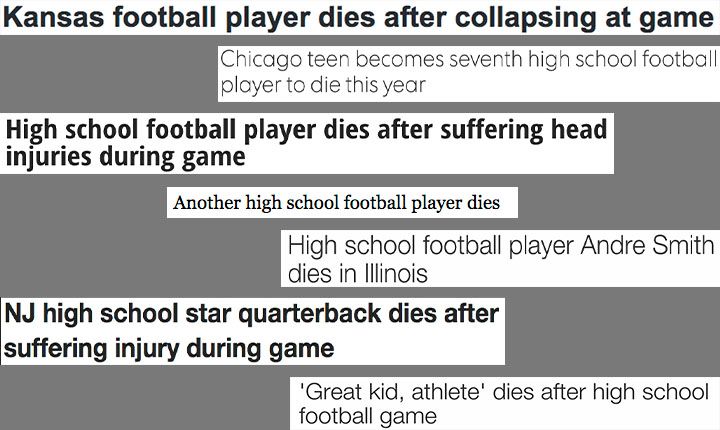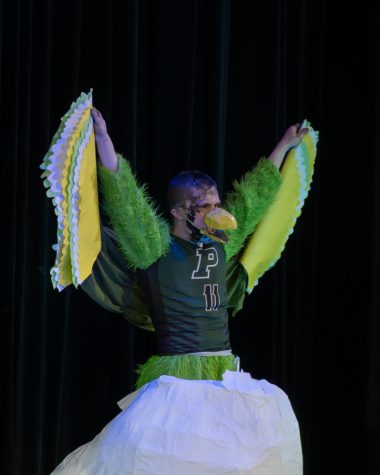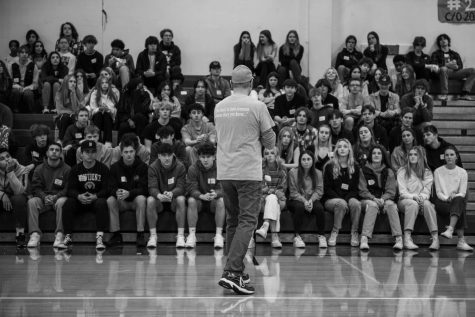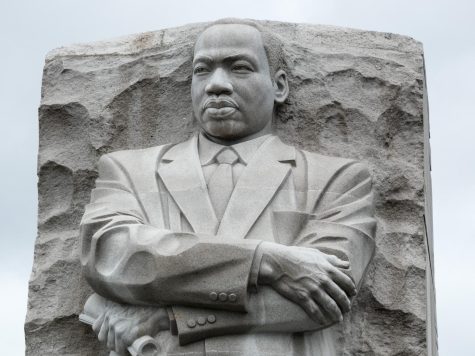Concussions: A Game Changer
Sports Editor, Seth Walloch, identifies the major problem in sports: concussions.
February 26, 2016
It has been all over the headlines: ‘Kid stops playing the sport he/she loves because of concussion’. Because of contact sports like football, soccer, and basketball, concussions are becoming more of a problem in the lives of student athletes. Most people think that concussions only come with a small headache, but no one focuses on what the athletes go through emotionally and socially. Students who struggle with concussions have trouble doing simple tasks like chores or homework. Concussions can also cause memory loss and permanent brain damage.
“A concussion is a neurological impact on the brain from some outside force, whether it be a blunt force or a blow to the head,” said Peninsula High School’s athletic trainer, Webb Sommer.
Concussions have been a problem both in and out of high school sports for a long time. Luckily, technology has advanced enough that physicians are able to identify and diagnose them almost immediately.
Throughout the years, doctors have identified the symptoms associated with concussions. These symptoms include difficulty sleeping, experiencing the need to sleep more, increased trouble thinking or remembering, and a lack of focus.
“Back in the day, a concussion was you got knocked out,” said Webb. “Then I would ask the person if they had a headache, which they always did. I would give them fifteen minutes before asking if they still had a headache. Normally they would just say no, even if they had a headache fifteen minutes earlier. Then I would say okay just to be safe run back and forth fifteen times. After all that exertion they would still normally say that they were okay and they would get back in game, probably concussed. It’s much safer now.”
The problem with concussions is that they affect more than athletic ability/playing time. They can also have long-term social and academic side effects. Cameron Lewis, a student athlete, had to stop playing football in his junior year because of a repeated head injury.
After receiving an initial head injury last year, Lewis got a concussion this year. Both injuries occurred while playing football, and the combined effects have impacted Lewis’s brain negatively. Doctors have told Lewis that if he receives another concussion, he could suffer permanent brain damage. As a result, Lewis had to stop playing the sport he loved.
Lewis doesn’t think much about concussions, other than that they can be dangerous to your health.
“It’s just like a broken arm or a broken leg,” said Lewis. “After a while, it heals, but the only issue is that if you have repeated concussions, it can cause permanent brain damage.”
While playing soccer last year, sophomore goalie Ben Undem dove for a ball as another player came in. The opposing player kicked Undem in the temple, causing him to get a concussion. Surprisingly, his symptoms were different from those experienced by Lewis.
“I would have headaches that would affect my mood- I would get quickly annoyed when around my friends,” said Undem.
Concussions happen in many different sports, from football to swimming, but most commonly in contact sports.
“I see concussions in a lot of different sports but mostly in football,” said Webb.
The Washington Interscholastic Activities Association (WIAA) is the main organization that operates high school football in Washington. It has rules that help to diminish the amount of concussions by limiting the actions of the players during the game.
One is the rule of targeting, which is when one player is called for hitting another player on the intent of hurting or injuring them. Another rule is the restriction of helmet to helmet contact, which is when a player intentionally leads with his helmet into that of another player.
They are definitely a great start in efforts to limit head injuries in high school football.
“These rules are helping the players and the coaches. They especially help because now the coaches and players are practicing to avoid these fouls,” said Athletic Director and PHS head football coach Ross Filkins.
In 2015 alone, eleven student football players died because of drastic head injuries. However, concussions and head injuries can happen in any sport. They can even happen from slipping on ice or water.
Though people are dying from sport-related injuries, many athletes are not deterred from playing the sport they love.
“We have not seen any drop off in our numbers on any level,” said Filkins, when asked whether concussions had impacted the turnout for football.
Concussions have become a much more serious problem because of the deaths that they have caused in student athletes. It is important to be able to recognize if they or other players have any kind of concussion symptoms. If you suspect you or someone else may have a concussion, go see a doctor or school trainer immediately.














